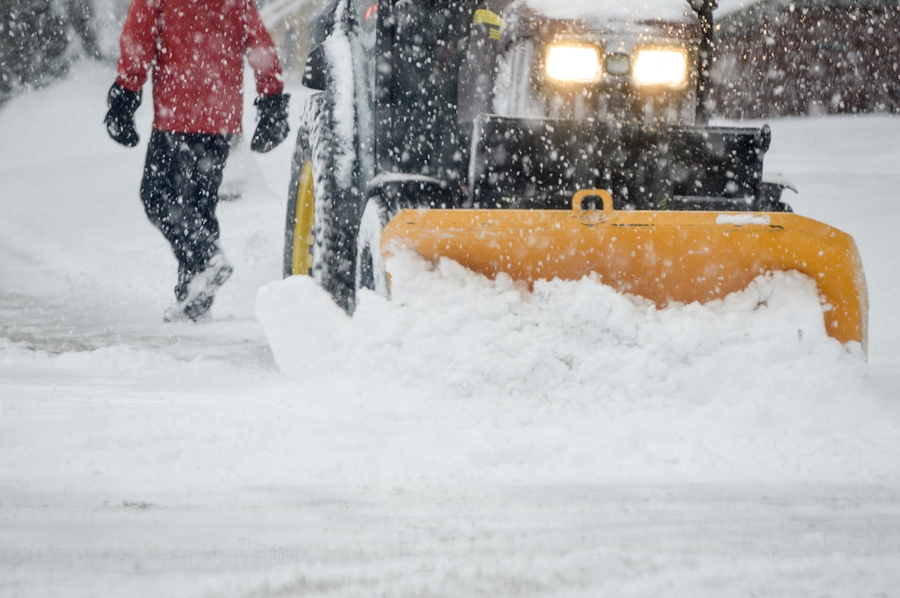There is a world of difference between venturing outdoors for a few hours in cold and windy weather for a sports activity with a few friends and working all winter in harsh climatic conditions that can sometimes result in serious health problems even including death. So here is a quick overview of symptoms to recognize, precautions to take and details of the law to learn about.
THE RISKS OF COLD TO THE BODY
Working in conditions of extreme cold can lead to more or less serious health problems. To begin with, chilblain may occur at the extremities (hands, feet, ears, cheeks and nose) which then become purplish red and painful, possibly with blisters or cracks. Then, frostbite may develop as ice crystals appearing under the skin which can cause gangrene and, in some cases, lead to amputation. The final risk, and by no means the least, is hypothermia, which is marked by a body temperature less than or equal to 35ºC; at 25ºC it becomes fatal for men or women.
SELF-REGULATION HAS ITS LIMITS
When the temperature outside is chilly, the body will warm itself by metabolic activity (heartbeat, blood circulation, physical activity). However, it’s difficult to retain this heat when the temperature drops sharply, the wind rises, there is contact with cold objects and due to physical effort, sweat is evaporating. Symptoms such as shivering (involuntary movement in an attempt to create heat) will appear to warn us that the body is in a situation where heat loss is greater than gains. Fatigue, alcohol, tobacco, drugs or even circulatory problems will worsen the symptoms, but certain foods will rather have a beneficial effect, such as starches (pasta, rice, potatoes), soups and hot drinks other than coffee.
SOLUTIONS AND PRECAUTIONS
The ACGIH (American Conference of Governmental Industrial Hygienists) has established winter work standards which advocate wearing appropriate protective clothing (they must allow sweat to evaporate, cut the wind, be waterproof and stay dry) and limit the exposure time which varies depending on the temperature and the wind. This time is established for a four-hour period, at the end of which a long break is provided for, with warm-up periods of 10 minutes every 2 hours in a heated place, if possible. To avoid risks, in addition to the clothing and food advice, it is important that workers monitor one another, since not everyone can see the early symptoms for themselves. Survival therefore depends on the speed with which colleagues respond: get someone into warmth, call for help.
WINTER IS ALSO…
The risk of carbon monoxide poisoning arises when a person is in an enclosed space with a lack of oxygen and gas appliances that produce carbon monoxide. If someone gets a headache, fatigue, nausea, dizziness or vomiting, they should be checked for possible carbon monoxide poisoning. Ventilation should be provided immediately and preventive maintenance performed on appliances, possibly replacing gas appliances with electric appliances and installing carbon monoxide detectors.
Snow removal requires precautions to prevent falls (which can be fatal) and good physical condition to avoid heart attacks. Some tips:
Begin snow removal with a few warm-up exercises;
Have a shovel that is not too heavy (less than 1.5 kg) with a long handle to avoid bending;
Shovel snow when it is fresh rather than hard packed;
Remember that ¾ of the area of a roof can be shovelled and that it can support 17 cm of ice, 38 cm of hard-packed snow and 70 cm of fresh snow;
Locate electric wires and never touch them with the metal handle of the shovel.
A FEW FIGURES
Over five years, from 2008 to 2012, the Commission de la santé et de la sécurité au travail (CSST) recorded an average of 11 accidents per year related to working outdoors in the cold. The main locations of injuries are the fingers, toes and nails in 39.6% of cases, hands (other than fingers) for 15.1% of cases and feet (other than toes) in 11.3% of cases.
